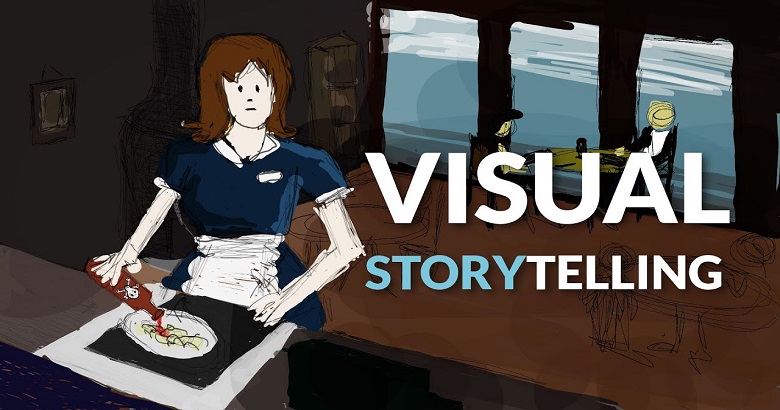
Storytelling is an ancient art that transcends cultures, connecting us through shared narratives. While the mediums have evolved, the core methods remain timeless. This article explores the four primary methods of storytelling: oral, written, visual, and digital, each offering unique ways to engage and inspire audiences.
1. Oral Storytelling
The Roots of Oral Tradition
Oral storytelling is one of the oldest forms of communication. Before the advent of writing, stories were passed down verbally from generation to generation. This method relies on the storyteller’s ability to captivate an audience through voice, gestures, and expressions. It’s a dynamic form of storytelling that allows for real-time interaction and adaptation.
Characteristics and Techniques
- Narrative Voice: The storyteller’s voice is crucial. Tone, pitch, and pace can significantly impact the audience’s engagement. A skilled storyteller can evoke emotions and create tension simply through vocal modulation.
- Memory and Improvisation: Oral storytelling often involves memorizing stories, but skilled storytellers can improvise, adding personal flair or adapting to audience reactions. This flexibility allows stories to evolve over time, incorporating new elements or responding to the cultural context.
- Cultural Significance: Many cultures rely on oral storytelling to preserve history, traditions, and values. It’s a communal activity that fosters connection and understanding. Stories often serve as moral lessons or historical accounts, ensuring that cultural knowledge is passed down.
Modern-Day Oral Storytelling
Today, oral storytelling thrives in various forms, from podcasts to spoken-word performances. It remains a powerful way to share experiences and connect with others, proving that the human voice is still a compelling tool for storytelling. Events like The Moth and TED Talks highlight the continued relevance and impact of oral storytelling in contemporary society.
2. Written Storytelling
The Power of the Written Word
Written storytelling emerged with the invention of writing systems, allowing stories to be recorded and shared across time and space. This method provides a tangible record, preserving narratives for future generations. The written word allows for careful crafting of language, providing depth and complexity to stories.
Characteristics and Techniques
- Structure and Style: Written stories often follow specific structures, such as the three-act structure or the hero’s journey. These frameworks help organize narratives and guide readers through the story. Style varies widely, from poetic prose to straightforward narratives, allowing for diverse expressions of creativity.
- Descriptive Language: Writers use language to create vivid imagery and evoke emotions. Descriptive language can transport readers to different worlds and immerse them in the story. Through detailed descriptions, writers can build complex settings and characters.
- Character Development: Written stories allow for deep exploration of characters’ inner thoughts and motivations, providing insight into human nature. This introspection can create strong emotional connections between readers and characters.
Evolution of Written Storytelling
From ancient epics like “The Iliad” to modern novels, written storytelling continues to evolve. The rise of self-publishing and online platforms has democratized the process, enabling more voices to be heard. Books, articles, and blogs remain essential tools for sharing stories and ideas. The digital age has expanded access, allowing writers to reach global audiences and experiment with new formats.
3. Visual Storytelling

The Impact of Visuals
Visual storytelling uses images to convey narratives, tapping into our innate ability to process visual information quickly. This method is powerful because it transcends language barriers, making it accessible to diverse audiences. A single image can evoke emotions and convey complex stories instantly.
Characteristics and Techniques
- Imagery and Symbolism: Visual stories often rely on imagery and symbolism to convey themes and emotions. Each image can tell a story in itself, adding layers of meaning. Symbolic elements can create deeper connections and provoke thought.
- Composition and Design: The arrangement of visuals, including color, lighting, and perspective, plays a crucial role in guiding the viewer’s interpretation and emotional response. Effective composition can draw viewers into the narrative and highlight key elements.
- Sequential Art: Comics and graphic novels use sequential art to tell stories, combining written dialogue and visual elements to create a cohesive narrative. This blend allows for dynamic storytelling, where visuals and text complement each other.
The Rise of Visual Media
With the advent of photography, film, and television, visual storytelling has become a dominant form of narrative. Movies and TV shows captivate global audiences, while platforms like Instagram and Pinterest allow individuals to share visual stories with the world. The ability to convey complex stories through visuals continues to expand with advancements in technology, such as virtual reality and augmented reality, which offer immersive storytelling experiences.
4. Digital Storytelling
The Digital Revolution
Digital storytelling integrates various media forms, including text, audio, images, and video, to create interactive and immersive narratives. The digital age has transformed storytelling, offering new ways to engage audiences. This method leverages technology to enhance the storytelling experience and reach wider audiences.
Characteristics and Techniques
- Interactivity: Digital stories often involve interactive elements, allowing audiences to influence the narrative. This engagement can create a more personalized experience, as users can explore different paths and outcomes.
- Multimedia Integration: Combining different media types enriches the storytelling experience, providing multiple entry points for audience engagement. This integration allows for dynamic and multi-sensory experiences.
- Online Platforms: Social media, blogs, and websites serve as platforms for digital storytelling, reaching vast audiences and fostering community interaction. These platforms enable creators to share stories instantly and engage with audiences in real time.
Final Thoughts
The four methods of storytelling—oral, written, visual, and digital—each offer unique ways to connect and communicate. Whether through the spoken word, the written page, a visual masterpiece, or an interactive digital experience, storytelling remains a vital part of human culture. Each method has its strengths and can be used individually or in combination to create rich, engaging narratives.
As we continue to explore and innovate, storytelling will undoubtedly evolve, finding new ways to resonate with audiences and reflect the diverse tapestry of human experience. Embracing these methods allows us to share our stories, preserve our histories, and connect with others in meaningful ways. Ultimately, storytelling is about connection, and these methods ensure that stories continue to inspire, educate, and entertain across generations.
Frequently Asked Questions
1. How does oral storytelling adapt to modern audiences?
Oral storytelling has evolved with technology, finding new platforms in podcasts and live performances. Modern storytellers use digital tools to reach wider audiences, incorporating multimedia elements like sound effects and music. This adaptation maintains the intimate, personal connection of traditional storytelling while enhancing the experience with modern technology. Events and workshops also bring communities together, allowing for interactive storytelling sessions that engage and educate audiences of all ages.
2. What makes written storytelling unique in character development?
Written storytelling excels in character development by allowing deep exploration of characters’ thoughts and motivations. Authors can delve into complex backstories, internal conflicts, and emotional journeys. This depth creates nuanced characters that resonate with readers. The written word offers the flexibility to experiment with narrative styles and perspectives, providing insight into different facets of human nature. Through detailed prose and introspective passages, authors craft characters that feel real and relatable.
3. How do visual storytelling techniques enhance narratives?
Visual storytelling employs imagery and symbolism to convey complex ideas quickly and effectively. Techniques like composition, color theory, and perspective guide the viewer’s emotions and focus. Visual media can transcend language barriers, making stories accessible to diverse audiences. In comics, films, and graphic novels, the combination of visuals and text creates a dynamic storytelling experience. The use of visual metaphors and motifs adds layers of meaning, inviting viewers to engage with the narrative on multiple levels.
4. What role does interactivity play in digital storytelling?
Interactivity in digital storytelling allows audiences to engage with the narrative actively. Users can influence story outcomes, explore different paths, and participate in the storytelling process. This engagement creates a personalized experience, enhancing immersion and emotional connection. Interactive elements can include choices, branching narratives, and multimedia integration. As technology advances, the potential for more complex and engaging interactive stories grows, offering new possibilities for creators and audiences alike.
5. How is digital storytelling shaping the future of narratives?
Digital storytelling is revolutionizing narratives by integrating multimedia elements and offering immersive experiences. Technologies like VR and AR provide new ways to engage with stories, creating environments where audiences can explore and interact. The digital landscape allows for innovative storytelling forms, such as interactive films and transmedia narratives, which combine multiple platforms and media types. This evolution expands the boundaries of traditional storytelling, inviting audiences to become active participants in the narrative journey.
